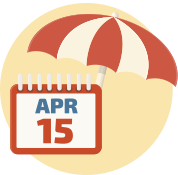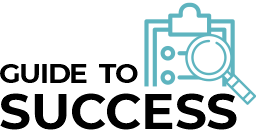Creating a well-thought-out content strategy for your social media platforms as a scientific illustrator is vital for engaging your target audience and building a strong online presence.
By aligning your content strategy with your audience's interests and needs, you establish yourself as a go-to resource for scientific illustration and create meaningful connections within the scientific community. So, get creative, be informative, and engage with your audience to foster a thriving online presence as a scientific illustrator.
Identifying Your Target Audience's Preferred Social Media Platforms
Identifying your target audience's preferred social media platforms as a scientific illustrator is crucial for reaching them effectively. Here are some insightful tips on how to discover which platforms your audience prefers:
1. Research and Understand Your Audience:
Again, remember the task you did in section 2 of chapter 2 where you gathered all that valuable information to define your target market. Now, it's time to give it another look as you dive into planning your social media strategies.
You must achieve a deep understanding of your target audience. Who are they? Scientists, researchers, educators, or science enthusiasts? What are their demographics, interests, and online behavior? This information will serve as a foundation for identifying their preferred social media platforms.
2. Conduct Surveys or Interviews:
Engage with your audience directly to gather insights about their social media habits. You can conduct surveys or interviews to learn which platforms they use the most and why. Ask questions about their favorite platforms for consuming scientific content, connecting with experts, or staying up-to-date with the latest scientific developments.

3. Analyze Your Existing Audience:
Look closely at your current followers and engage with them. Pay attention to the platforms where they are most active and responsive to your content. This can give you valuable clues about the social media platforms that resonate with your target audience.
4. Explore Niche Communities and Groups:
Research science-related communities, groups, and forums on different social media platforms. Observe the level of engagement and activity in these spaces. Are there thriving scientific communities on specific platforms? This can indicate the popularity of certain platforms among your target audience.
5. Follow Influencers and Thought Leaders:
Identify key influencers and thought leaders in the scientific community. See which platforms they are active on and the kind of engagement they receive. By following their lead, you can tap into the platforms where your target audience gathers and engages with scientific content.

6. Keep an Eye on Industry Trends:
Stay informed about emerging trends and shifts in social media usage patterns. New platforms may gain popularity, while others may lose traction. By staying up-to-date, you can adapt your strategy accordingly and reach your audience where they are most active.
7. Experiment and Track Engagement:
Try posting on different platforms and monitor the engagement you receive. Are you getting more likes, comments, and shares on one platform compared to others? Experiment with various types of content and evaluate the response to determine which platforms generate the most interaction and reach.
Well, from where I stand, here's what I think.
In my personal experience, when it comes to finding potential clients who are interested in hiring scientific illustrators, Facebook and LinkedIn are ideal social media platforms. Let me tell you why:
The User Demographics:
Both Facebook and LinkedIn have user bases that consist of professionals in managerial and higher positions who have the authority to hire scientific illustrators. These platforms attract individuals with diverse backgrounds, including researchers, educators, and professionals in scientific industries. This makes them great platforms to showcase your work and connect with potential clients who understand the value of scientific illustration.
Groups and Communities:
One fantastic feature of Facebook and LinkedIn is the ability to create and join groups based on specific interests. These groups provide a wonderful opportunity for scientific illustrators to connect with like-minded individuals, industry experts, and potential clients who are actively seeking artistic services. You can request to join relevant groups related to scientific illustration, science communication, or specific scientific fields.

Engaging with these groups allows you to showcase your skills, share your expertise, and build relationships with potential clients.
By utilizing Facebook and LinkedIn effectively, you can tap into a targeted audience of professionals who are in a position to hire scientific illustrators. Engaging with the right groups and showcasing your work on these platforms can significantly increase your chances of connecting with potential clients.
So, don't hesitate to explore the opportunities that Facebook and LinkedIn offer for finding clients who appreciate the beauty and significance of scientific illustration.
Now, while Facebook and LinkedIn are great platforms for finding potential clients as scientific illustrators, the other social media platforms can serve as excellent allies for discovering and building collaborations and joint projects. Let me explain why:

Instagram:
Instagram allows you to share your work, engage with followers, and connect with fellow artists, scientists, and science enthusiasts. By building a strong presence on Instagram, you can attract attention from individuals who may be interested in collaborating on projects or featuring your work in related initiatives.
Twitter:
Twitter provides a fast-paced and dynamic environment where you can join conversations, participate in science-related hashtags, and engage with influencers and professionals in the scientific community. It's an excellent platform for networking, sharing your insights, and discovering potential collaboration opportunities. By actively participating in discussions, you can establish connections with researchers, educators, and organizations who may have projects where your scientific illustrations can add value.
YouTube:
YouTube offers a unique opportunity to showcase your artistic process, share tutorials, and provide educational content related to scientific illustration. By creating video content, you can not only engage with your audience but also attract the attention of other creators, science communicators, and potential collaborators. Collaborating on YouTube can range from featuring your work in educational videos to partnering with science channels for visual storytelling.
Pinterest:
By using Pinterest effectively, you can attract the attention of individuals who are searching for science-related visuals, which can lead to collaboration opportunities or exposure to potential clients.
By leveraging these other social media platforms, you can expand your reach, connect with like-minded individuals, and discover exciting collaboration prospects. While they may not directly lead to client acquisitions, they offer valuable opportunities to network, build relationships, and contribute to collaborative projects within the scientific community. So, make sure to explore and utilize the unique features of each platform to find and nurture these collaborations.
Remember, it's not about being present on every social media platform but rather focusing on the ones where your target audience is most active and engaged. By understanding their preferences, you can optimize your efforts and effectively reach and connect with your audience as a scientific illustrator.
Developing a Content Calendar
Consistency is key when implementing your content strategy. Plan your posts in advance, maintain a regular schedule, and adapt based on audience feedback and analytics. Monitor the performance of your content, track engagement, and make adjustments as needed to ensure you're effectively connecting with your target audience.
Developing a content calendar is a fantastic way to stay organized and ensure consistent and timely posting on various social media platforms. Here's a guide to help you through the process:

1. Determine Your Goals:
Start by defining your social media goals. Do you want to increase your followers, engage with your audience, or promote your scientific illustration services? Understanding your objectives will shape the content you create and the platforms you focus on.
2. Know Your Audience:
Get to know your target audience—scientists, educators, or science enthusiasts—and their preferences. Consider their demographics, interests, and the type of content they engage with. This will help you tailor your posts to resonate with them and provide value.
3. Choose the Right Platforms:
Identify the social media platforms that align with your goals and target audience. For scientific illustration, platforms like Facebook and LinkedIn can be particularly effective. Select the ones that allow you to showcase your artwork and engage with your peers effectively.
4. Plan Your Content Mix:
Create a mix of content types to keep your audience engaged. This can include sharing completed scientific illustrations, behind-the-scenes glimpses of your creative process, science facts or explanations related to your artwork, and even tips and tutorials for aspiring scientific illustrators. Variety will make your feed more interesting and valuable to your followers.
5. Set a Posting Schedule:
Determine how often you want to post on each platform and create a schedule accordingly. Consistency is key, but make sure it's realistic and manageable for you. Aim for a balance between being active and not overwhelming yourself. You can start with a few posts per week and adjust as needed.

6. Use a Content Calendar Tool:
Utilize a content calendar tool or spreadsheet to plan and organize your posts. Include the dates, platforms, content topics, and any relevant hashtags or keywords. This will help you visualize your content strategy and maintain a consistent flow.
7. Plan Ahead:
Take the time to brainstorm and create a backlog of content ideas. This way, you'll always have something to post even during busy periods. Consider seasonal themes, science events, or relevant trending topics that you can incorporate into your content plan.
8. Engage with Your Audience:
Social media is all about fostering connections. Dedicate time to engage with your audience by responding to comments, asking questions, and participating in relevant discussions. This interaction builds relationships and strengthens your online presence.
9. Analyze and Adjust:
Regularly analyze your social media metrics to see what's working and what needs improvement. Pay attention to engagement rates, reach, and follower growth. Use these insights to refine your content strategy and make adjustments as needed.

10. Stay Flexible and Experiment:
Remember that social media is ever-evolving, so stay open to trying new things. Experiment with different types of content, posting times, and even collaborations with other artists or science-related accounts. Adapt and evolve your content calendar based on what resonates best with your audience.
By following these steps and staying committed to your content calendar, you'll be able to consistently deliver engaging and timely posts across different social media platforms as a scientific illustrator. Best of luck, and enjoy connecting with your audience through your amazing scientific illustrations!
Module Conclusion
In the module's final phase, you can revisit your "Guide to Success" to:

